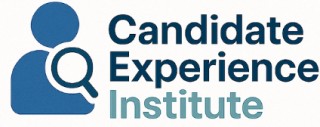
Defining an Applicant
What It Means to Be an Applicant
When individuals start their journey in the hiring process, they step into the role of an applicant. An applicant is someone who shows interest in a job opening by submitting an application for a position, and they actively engage in the recruitment process. Applicants are not merely passive participants; they are navigating a complex system that includes responding to job postings, meeting basic qualifications, and interacting with hiring managers and human resource personnel. In today's digitized world, candidates interact with sophisticated applicant tracking systems (ATS) that streamline the management of numerous applications. The use of technology has turned the application process into a more efficient and structured experience, but it also presents new challenges and expectations for job seekers. As they journey through various stages of the hiring process, from initial submission to potential interviews and background checks, applicants find that their role involves constant adaptation and engagement. They must filter through numerous online job postings, apply via internet platforms, and sometimes even interact with AI-powered recruitment software that assess their qualifications before reaching a human review. Understanding the applicant's role is crucial, especially for those involved in talent acquisition. Enhancing candidate experience within the pre-hire stage offers a competitive edge and maintains a positive perception of the organization. For more insights on optimizing candidate experiences, check out enhancing candidate experience.The Journey of an Applicant
Application Journey: Navigating the Path
Embarking on the journey as an applicant can often feel daunting, as it is shaped by numerous steps and interactions along the way. From the moment a job seeker decides to apply for a job opening, they become a part of a well-defined recruitment process that ultimately determines their fate in the job market. Understanding the intricacies and phases of this journey is crucial not only for applicants but also for hiring professionals aiming to improve the applicant experience.
The journey typically begins with the search for suitable positions, often facilitated by the internet, which has become a cornerstone for discovering open roles and submitting applications. Applicants must navigate a multitude of job boards, company websites, and recruitment platforms to find opportunities that align with their qualifications and career aspirations. This search phase is essential as it sets the foundation for the entire hiring process.
Once an applicant identifies a promising job, they must prepare their application materials meticulously. This includes ensuring their resume reflects the required skills and experience for the position, as well as crafting a compelling cover letter. The incorporation of applicant tracking systems (ATS) by companies means applications are often screened initially by software, making it vital for candidates to optimize their materials to meet specific keyword criteria.
Following the submission, applicants may experience a waiting period as their application navigates the recruitment management system. This phase, often marked by updates from the organization, involves background checks and schedules for potential interviews. Each touchpoint in this process shapes the overall experience for the candidate, emphasizing the importance of clear communication and timely responses from employers.
Ultimately, the goal for both applicants and recruiters is to reach a mutually beneficial outcome. As the talent acquisition process evolves with technology, ensuring a seamless and positive journey for candidates is key. By adopting best practices and enhancing each step of the application process, a more effective and engaging candidate experience can be achieved. For organizations looking to refine this, leveraging tools that offer effective prehire assessments can greatly enhance the quality of recruiting efforts.
Challenges Faced by Applicants
Navigating Common Obstacles
The journey of an applicant can be fraught with challenges that complicate the hiring process. From grappling with complex application forms to anxiously awaiting responses, applicants face multiple hurdles that might hinder their path to employment. Understanding these challenges is crucial for businesses to refine their recruitment processes and provide a positive candidate experience. One primary challenge for applicants is the ambiguity in job descriptions and requirements. Vague or overly technical language can confuse job seekers, making it difficult for them to assess their eligibility. Clear communication regarding qualifications and the responsibilities of the position is vital. Furthermore, the application system itself can present difficulties. Many organizations use applicant tracking systems (ATS) for managing applications. While these software solutions help streamline the management of candidates, they often result in automated rejections if applicants' qualifications don't align perfectly. Candidates may feel disheartened when their efforts seem to vanish into a digital void. Another significant hurdle is the extended waiting periods during the recruitment process. Delayed feedback or lack of communication from hiring teams can frustrate applicants. Staying informed about one's application status is a central concern for job seekers. Regular updates and transparent timelines can significantly enhance the applicant's experience. Additionally, the digital landscape has introduced new challenges. The internet has increased the volume of applicants per job opening, intensifying the competition. With a larger pool of applicants, job seekers may find it harder to stand out. To navigate these obstacles, applicants often seek to understand personal attributes questionnaires, a tool that can shed light on how they might fit within an organization's culture and requirements. Recruiters must recognize these challenges to improve the process for both applicants and employers. By doing so, they will cultivate a more engaging and efficient hiring process that benefits all parties involved.Improving the Applicant Experience
Elevating Applicant Interactions
Improving the applicant experience is a crucial step in fostering a positive recruitment journey for potential job seekers. In an increasingly competitive job market, organizations must focus on creating streamlined processes to attract and retain top talent. A well-structured recruitment process not only ensures that candidates remain engaged but also enhances the reputation of the company as an employer of choice. Here are several ways companies can uplift the applicant experience:- Clear Communication: Applicants appreciate transparency in the hiring process. Keeping them informed about every stage of their application journey enhances trust and reduces anxiety related to the process. From acknowledging receipt of applications to providing feedback after interviews, maintaining communication is essential.
- User-Friendly Application Platforms: Utilizing an applicant tracking system that is intuitive and easy to navigate can significantly improve candidates’ experiences. A cumbersome application process may deter highly qualified applicants from even applying.
- Personalized Interactions: Tailoring communication to ensure it resonates with individual candidates can make a significant difference. Personalized emails and feedback demonstrate that the organization values the applicant's time and effort.
- Pre-Hire Assessments: Incorporating relevant assessments early in the application process can help filter candidates efficiently while providing applicants insights into their own fit for the role. For more insights, refer to discussions on using pre-hire assessments effectively.
- Efficient Interview Scheduling: Streamlining the interview scheduling process shows respect for the applicant's time. Empowering candidates to choose their interview slots through an online system can make the process smoother and less stressful.
- Feedback Mechanisms: Implementing systems for candidates to provide feedback about their experience can be invaluable. This feedback helps refine and improve future processes, ensuring they are more accommodating to applicants’ needs.
The Impact of Technology on Applicants
Technological Advancements Shaping the Applicant Experience
In the evolving landscape of recruitment, the role of technology is undeniably transformative. For applicants navigating the hiring process, technology not only facilitates but also complicates their journey. Understanding its impacts can empower both candidates and human resource teams. Modern applicant tracking systems (ATS) have redefined how resumes are collected and evaluated. Instead of manual sorting, a sophisticated software now scans for basic qualifications, ensuring that only candidates with the required applicant rule proceed to the next stage. This can significantly streamline the recruitment process and open up job opportunities. However, for applicants, understanding how to tailor resumes for these systems is crucial. Moreover, job seekers can access a plethora of information about potential employers online. The internet serves as a vast resource for researching company cultures, employee reviews, and more. This access enables candidates to better assess whether a job opening aligns with their qualifications and career goals. Technology also enhances communication within the hiring process. Recruitment management systems facilitate timely updates to applicants, reducing the anxiety associated with long wait times. These systems can schedule demos or interviews, track progress, and even automate responses, creating a more seamless experience for candidates. Furthermore, the use of artificial intelligence in pre-employment assessments helps identify the best talent by analyzing data beyond resumes. Although this introduces greater efficiency, it can also impose challenges for candidates who may feel disadvantaged by the lack of personal interaction. Nevertheless, these systems are crucial for managing the pool of applicants efficiently. Yet, as beneficial as technology is, it brings its own set of challenges, such as potential biases inherent in automated systems and the need for applicants to understand the digital nuances of applying for positions. Organizations must strive to balance automation with the human element to ensure the recruitment process remains equitable. To stay competitive in today's job market, applicants must become tech-savvy, continually updating their knowledge of how technological systems impact recruitment. Both organizations and candidates who embrace these tools wisely are better positioned to succeed in the evolving hiring landscape.Future Trends in Applicant Experience
Emerging Trends Shaping the Applicant Experience
The landscape of recruitment is continuously evolving, and the future of applicant experience is no exception. As technology advances, so does its impact on the hiring process, offering both opportunities and challenges for job seekers and employers alike.
One significant trend is the increasing use of artificial intelligence (AI) in recruitment. AI-powered tools are transforming how candidates are sourced, screened, and selected. These systems can quickly analyze vast pools of applicants, identifying those who meet the basic qualifications for a job opening. This not only speeds up the recruitment process but also enhances the accuracy of candidate selection.
Another trend is the rise of mobile-friendly application processes. With more job seekers using smartphones to search for positions, companies are optimizing their application systems for mobile use. This ensures a seamless experience for applicants, reducing the likelihood of losing potential talent due to cumbersome application processes.
Moreover, the integration of virtual reality (VR) and augmented reality (AR) in recruitment is gaining traction. These technologies offer immersive experiences, allowing candidates to explore company environments and understand job roles better before applying. This can lead to more informed applicants who are genuinely interested in the position.
Additionally, the focus on candidate feedback is becoming more pronounced. Companies are increasingly seeking feedback from candidates about their experience during the hiring process. This feedback is crucial for improving the recruitment process and ensuring a positive experience for future applicants.
Lastly, the emphasis on diversity and inclusion is reshaping recruitment strategies. Organizations are adopting more inclusive hiring practices to attract a diverse pool of applicants. This involves using unbiased recruitment software and implementing policies that promote equal opportunities for all candidates.
As these trends continue to develop, the applicant experience will likely become more streamlined, personalized, and inclusive, benefiting both job seekers and employers in the recruitment process.













